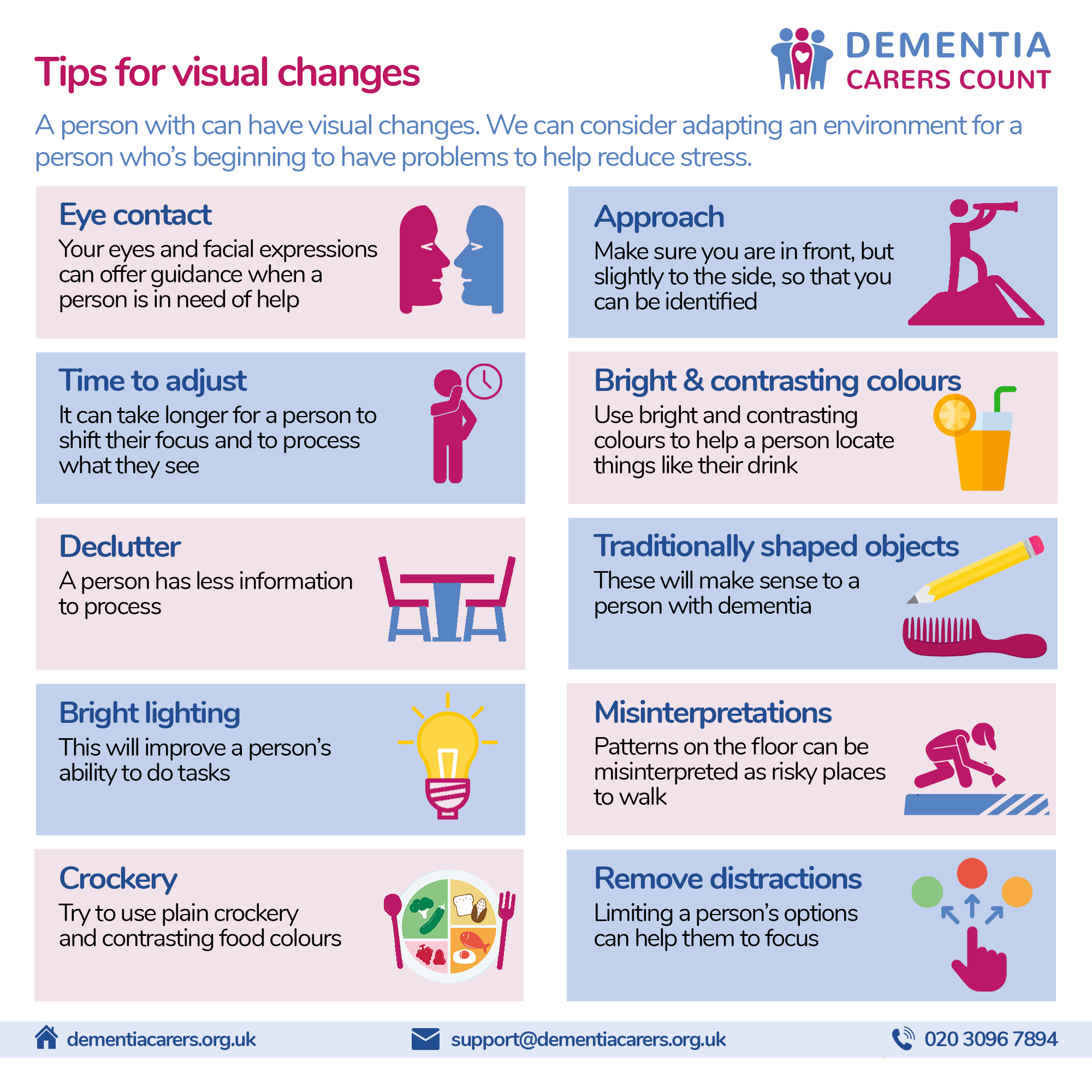A person with dementia can have visual changes.
We can consider adapting an environment for somebody who’s beginning to have problems and this will reduce any stress they may experience and can really impact on the well-being of both of you.
Strategies
Eye contact
Sometimes a person may not understand the information that we’re giving them and they may not understand what they need to do next, but they will use your face to get those cues, so it is so important that a person can see your face, and in particular your eyes.
Approach
A person with dementia may lose some of their peripheral vision, so they might see things a little like it would be if you were wearing a pair of binoculars. It also means that they may lose some of the depth perception and could be struggling to recognise objects. Make sure you are in front, but slightly to the side of them. They may not know you are there or see you if you to their side.
Time to adjust
It can take a person much longer to process things they see and to shift their focus from one thing to another so give them time.
Use bright and contrasting colours
If we provide a bright coloured mug or glass, for example, the person is more likely to see it on the table in front of them and far more likely to pick it up and have a drink.
Declutter
Try to avoid having too many objects in front of a person, so they don’t have to process lots of visual information all at once.
Use traditionally shaped objects
These will make sense to a person with dementia.
Bright lighting
A brightly lit environment reduces the number of shadows which can be misinterpreted and also improves the ability to do tasks and manipulate tasks.
Distractions/Misinterpretations
Be careful about the flooring that we choose, as it may be misinterpreted as a risky place to walk e.g. a shiny, glittery vinyl flooring may begin to look like slippery water, which a someone would want to avoid. Dark rugs on a light carpet may be interpreted as a huge gaping hole in the floor, swirls on a carpet might be seen as worms or snakes.
Crockery
Thinking about the plate and bowls you use can also be helpful. If you had a white bowl with porridge in, it may look like there was nothing there as the colours don’t stand out from each other or a pattern on a plate could look like food when in fact the plate is empty.
Removing distractions or confusing items
This can help a person to focus on using the item they need to use e.g. remove a fork from the table if eating soup.

